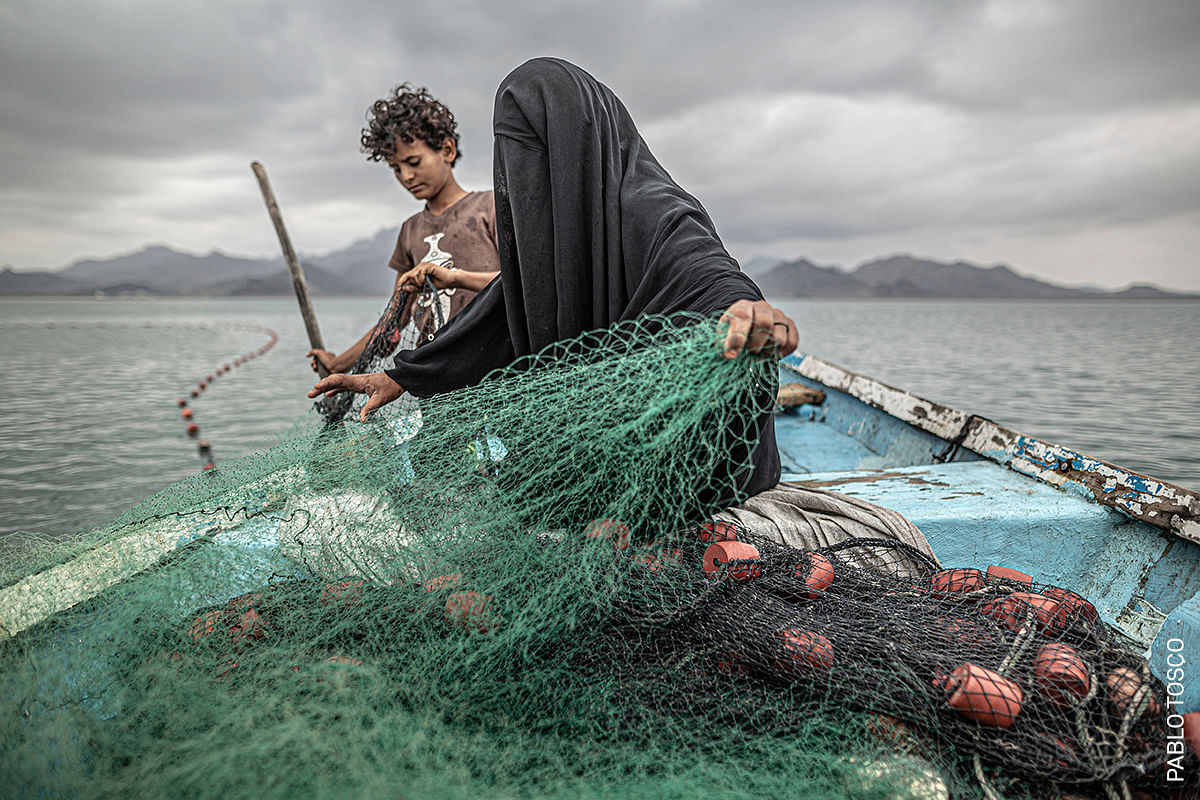Ms Fatima has nine children. In order to provide for them, she makes a living by fishing. Although her village was devastated by armed conflict in Yemen, Ms Fatima returned to resume her livelihood, buying a boat with money she earned from selling fish.
The conflict - between Houthi Shi'a Muslim rebels and a Sunni Arab coalition led by Saudi Arabia - dates from 2014, and has led to what Unicef has termed the world’s largest humanitarian crisis.
Some 20.1 million people (almost two-thirds of the population) required food assistance at the beginning of 2020, with approximately 80 per cent of the population relying on humanitarian aid.
A Saudi coalition blockade on Yemen between 2015 and 2017 imposed import restrictions on food, medicines and fuel. Resulting shortages exacerbated the humanitarian crisis.
In many cases, near-famine conditions were caused not so much by the unavailability of food, but because it became unaffordable, priced out of reach of most Yemenis by import restrictions, soaring transport costs due to fuel scarcity, a collapsing currency and other man-made supply disruptions.
In 2020 conflict intensified, and the situation was made worse by unprecedented heavy rainfall that made some 300,000 people homeless, as well as by locust infestations that destroyed crops, and the effects of the Covid-19 pandemic.

